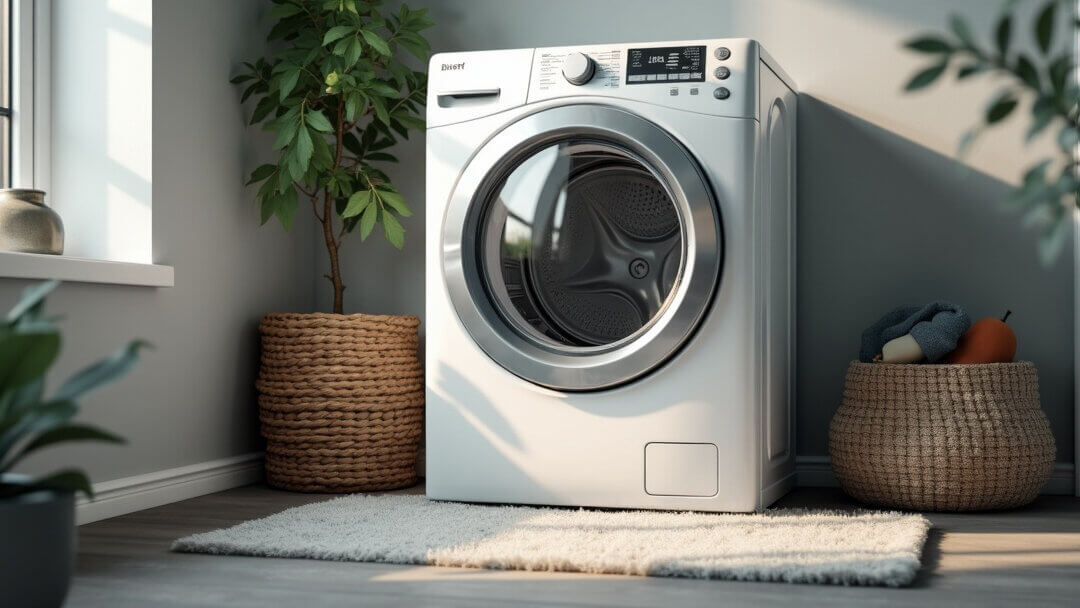Table of Contents
- Why You Should Clean Your Dryer Vent Lint Trap
- Step-by-Step Guide: How to Clean the Dryer Vent Lint Trap
- Turn Off the Dryer
- Find the Lint Trap in Your Dryer
- Remove Lint Buildup from the Trap
- Wash the Dryer Lint Trap for Deeper Cleaning
- Clean Around the Lint Trap Housing
- Check the Dryer Vent for Lint Accumulation
- How Often Should You Clean the Dryer Lint Trap?
- Extra Tips for Better Dryer Performance
- Conclusion
Why You Should Clean Your Dryer Vent Lint Trap Regularly
Before we jump into the steps, let’s talk about why cleaning the dryer vent lint trap is so important.
- Better Efficiency: When the lint trap is full, it blocks the airflow. This makes your dryer work harder. A clean lint trap helps the dryer run smoothly and dry your clothes faster. If your dryer is still not working efficiently after cleaning the lint trap, you may need a professional dryer repair service.
- Save Energy: A clean lint trap means your dryer doesn’t have to run as long. This saves energy and lowers your electric bill.
- Longer Dryer Life: When your dryer doesn’t have to work as hard, it lasts longer. Regular cleaning can keep it from wearing out too soon. If you’re comparing different laundry options, you might want to learn about the pros and cons of washer-dryer combo units.
- Safety: Lint is highly flammable. A clogged lint trap can lead to overheating and even cause a fire. Cleaning it helps keep your home safe. To further extend your dryer’s lifespan, follow this guide on keeping your dryer running efficiently.
Step-by-Step Guide: How to Clean the Dryer Vent Lint Trap
Now that you know why it’s important, let’s get started! Follow these easy steps to clean your dryer vent lint trap.
1. Turn Off the Dryer Before Cleaning the Lint Trap
Before doing anything, make sure your dryer is off. If it’s been running, wait for it to cool down so you don’t get burned.
2. Find the Lint Trap in Your Dryer
Most dryers have the lint trap either inside the door or on top. Pull it out carefully so you don’t spread the lint around.
3. Remove Lint Buildup from the Trap
Use your fingers to pick off the lint. You can also use a soft brush if needed. Make sure to get into the corners. If some lint is hard to reach, a vacuum cleaner with a small nozzle can help.
4. Wash the Dryer Lint Trap for Deeper Cleaning
Every now and then, it’s a good idea to wash the lint trap. Lint, along with fabric softener or dryer sheet residue, can clog the screen. Here’s how to wash it:
- Rinse the lint trap under warm water.
- Use a soft brush and dish soap to clean away any sticky residue.
- Let the lint trap air dry completely before putting it back in the dryer.
5. Clean Around the Lint Trap Housing
There might be some lint stuck inside the area where the lint trap sits. Use a vacuum or a small lint brush to clean it out.
This helps the dryer keep its good airflow. If other appliances in your home also need some basic care, check out this guide on performing basic maintenance on your refrigerator.
6. Check the Dryer Vent for Lint Accumulation
It’s also a good idea to check your dryer vent every year. Sometimes, lint escapes the trap and ends up in the vent, which can block it. If this happens, the dryer won’t work as well, and it could be a fire hazard.
Cleaning the vent helps keep things safe. If your dryer isn’t drying your clothes properly, the problem could also be with your other home appliances, like your fridge. Learn how to troubleshoot a refrigerator that won’t cool.
How Often Should You Clean the Dryer Lint Trap?
For the best performance from your dryer:
- After every load: Remove the lint from the trap.
- Every month: Wash the lint trap to clear out any residue.
- Once a year: Have the dryer vent cleaned by a professional, if needed.
Extra Tips for Better Dryer Performance
- Don’t Overload: Overloading the dryer makes it harder for air to move, which means your clothes take longer to dry.
- Use the Right Settings: Always use the correct heat and drying settings for your clothes.
- Be Careful with Dryer Sheets: Too many dryer sheets can leave a sticky film on the lint trap, so use them sparingly.
Conclusion
Cleaning your dryer vent lint trap is a simple job that makes a big difference. It helps your dryer run better, saves you money, and reduces the risk of a fire. Follow these easy steps to keep your dryer in good shape for years to come.


